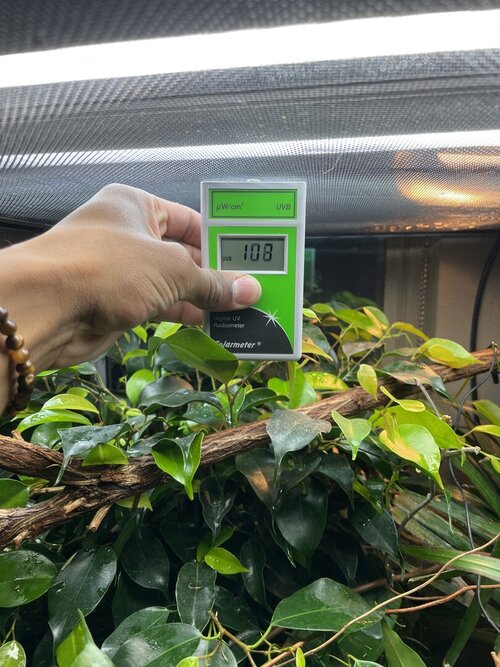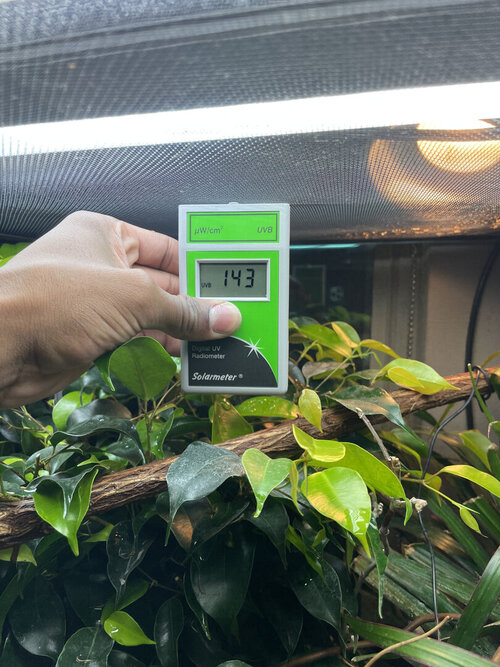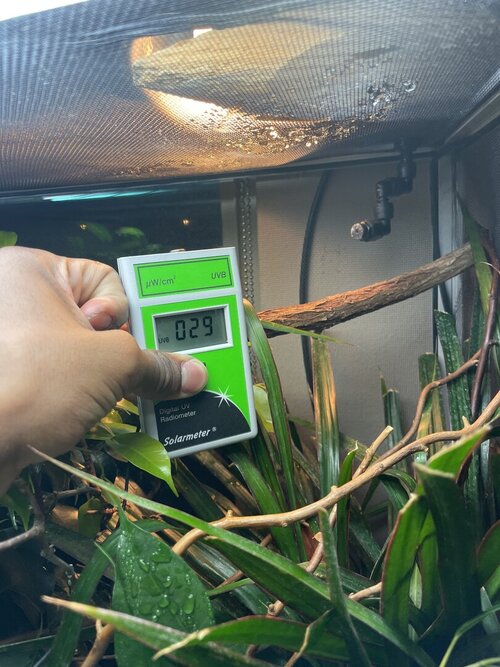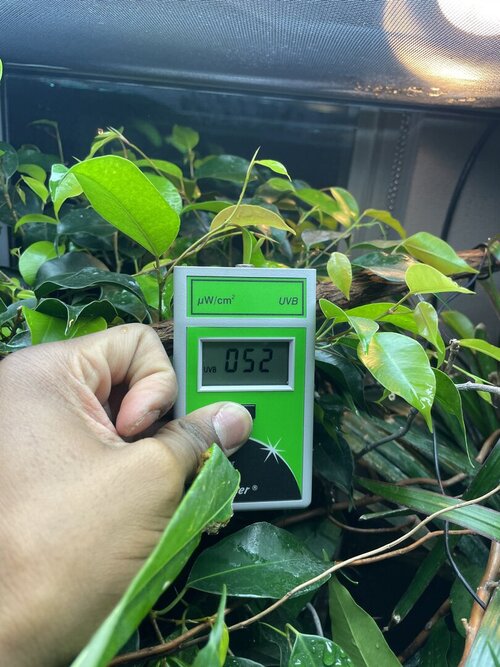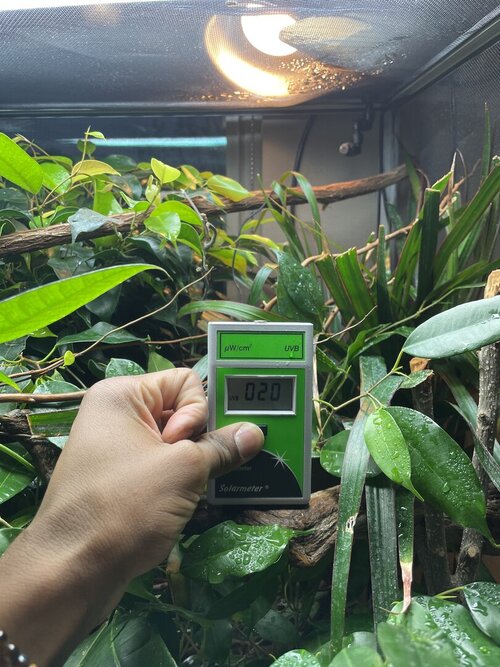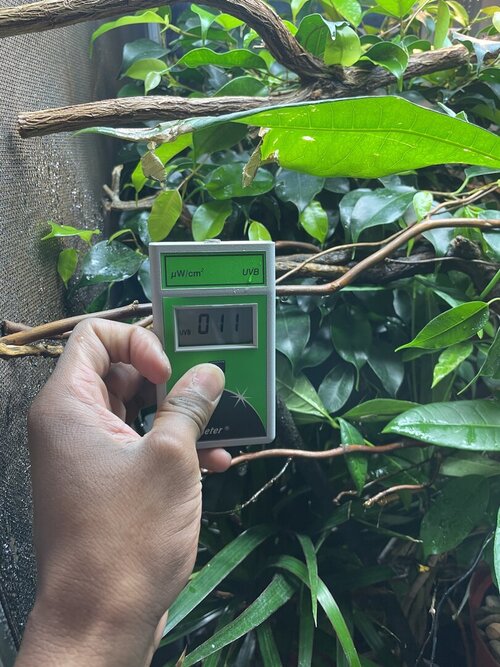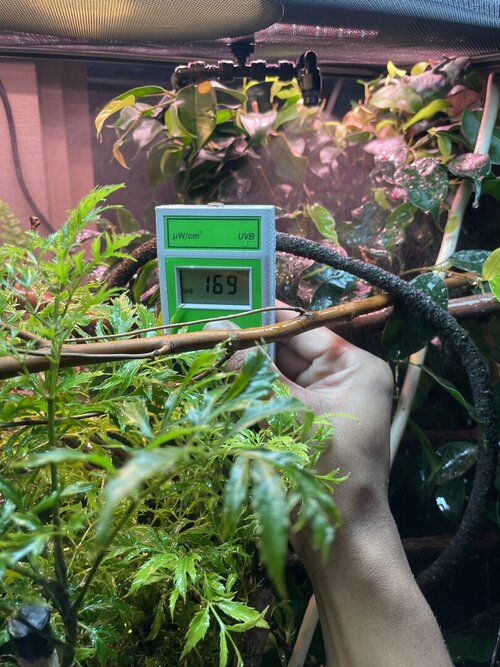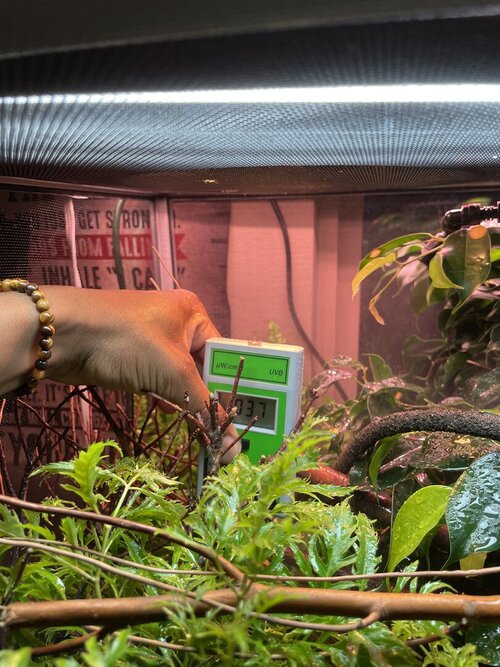Thompson
Chameleon Enthusiast
I just need to clear this up even though it was already sort of explained to me how to convert a solarmeter 6.2 reading to the 6.5 readings since my 6.2 measures in uW/cm^2. @nightanole mentioned that I should multiply whatever my 6.2 is reading by 40 and that if my 6.2 is reading 1 then 40 uW/cm^2 would translate to 1.0 on the UV index on a 6.5..... I am confused to say the least. I'll be buying a 6.5 but its frustrating because the 6.5 is another couple hundred dollars... but in the mean time I need to figure out my lighting situation and if the readings I'm getting are safe and healthy for my chameleons. If anyone could help understand what is good and what is bad on these readings that I'm getting. The first couple of pics are from a 5.0 bulb directly on top of the cage.


